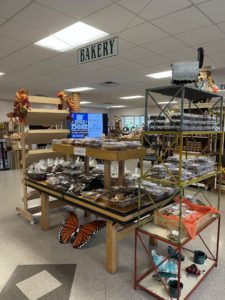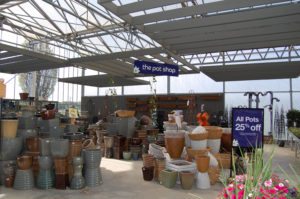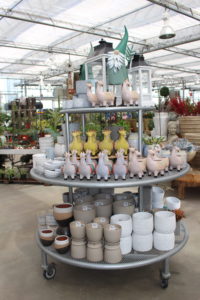Dollars & Sense: Yes, You Can Earn A Bonus This Year
Bigger bonuses for you and the team! There’s an idea that makes everyone smile. However, the corollary to bigger bonuses is cost controls. The smile disappears. Now you’re glum. But without cost controls, you won’t have profit dollars to generate big bonuses, better fringe benefits, expansion plans or any of the fun things you’d like to do. The old saying is true “It’s not what you bring in, it’s what you keep that matters.”
Many of us don’t fully understand cost controls. Simply put, they are the way a manager ensures minimal operational expenses and maximum profits. Cost controls can be as basic as a cabinet lock to ensure office supplies are used efficiently and stay in the office or as complex as a computerized system that regulates every aspect of inventory.
Applying Lean Manufacturing
Learning from others is always less painful and more profitable than learning from your own mistakes. Lean manufacturing is something you should learn from others, copying their success. The idea started out as part of the Toyota Production System in which every action was evaluated by what it added to customer value. Is there a connection between Toyota and retail horticulture? Definitely. If you’re serious about boosting your profits, then sign up for the “Lean Manufacturing” session at OFA’s Short Course on Saturday morning, July 8, in Columbus, Ohio (www.ofa.org).
Gary Hudson, the session moderator, tells the story of a large garden center with a 4-person administrative office. The newest employee’s job was to match invoices to purchase orders and packing tags. Another person, who received the incoming paperwork, sat next to the woman who prepared the final checks, across the room from the new employee. On his first visit, Gary could see the steps and time wasted transporting paperwork back and forth across the room. The owner’s explanation for the office layout was understandable but hardly logical: “That’s where the empty desk was.”
When Gary asked the three people involved to solve this “problem,” their discussion lasted less than 15 minutes, and that night the desks were moved. By reducing their steps, the employees knew they would each save at least 10 minutes a day and have easier paperwork flow and enhanced communication.
When you look at Figure 1, page 20, you’ll see how Gary’s suggestion probably saved this owner more than three weeks of productivity per year. While 10 minutes doesn’t sound like much, multiply it by three people, then by five days a week and by 52 weeks a year. It amounts to 161_3 work days a year!
Sometimes changes made to boost productivity have surprising consequences. One West Coast garden center had long, straight aisles through hundreds of plants, shrubs and tall trees. The design of their acres of product could best be described as “bowling alleys.” Employees had trouble quickly restocking long, parallel lanes that stretched more than 200 ft., so a large “X” walkway was cut into the pattern allowing employees and their carts to move more quickly from row to row. Increased employee productivity was the trade-off for the reduced display space. To everyone’s surprise, the average customer purchase immediately increased as buyers also found it easier to get to other products. Increased productivity translated into increased revenue. It doesn’t get better than that!
Personnel Myths
For most garden centers, personnel costs come in second after cost of goods. That’s why personnel costs are a fruitful place to look for savings to fund this year’s bonuses. To help you, let’s expose three myths about personnel costs.
Myth #1: Employees are your best asset. Maybe this was true once upon a time, but that was then, this is now. Today, great employees are your best assets. Good employees are assets. Mediocre or bad employees are liabilities. Underperformers drag everyone down and decrease productivity. Your employees will know you’re serious about your business when you hold everyone to the same, consistently high standards. Great people will thrive in this environment. Others will either rise to the occasion or depart with their dignity intact so they can lower profits someplace else.
Myth #2: Employees like what they do or they wouldn’t do it. It’s called “work.” If every task were fun and games, you’d be running Disneyland, not a garden center. Tell your employees you know they may not like parts of their jobs. That’s okay. It is NOT okay to neglect that part of the job or perform below your high standards. This may be a maturity issue. Adults know life isn’t all joy and laughter and can balance the fun parts of the job with the drudgery.
If you have employees who can’t grasp this, address the issue immediately. It’s not fun, but the lack of standards and/or erratic enforcement of standards that is likely the major barrier between you and your bonus.
Myth #3: If we buy XYZ, we’ll save money. There are many technological changes being sold in our industry that will “increase productivity.” Few deliver the promised returns. Why? Because we as owners don’t follow through. If a new phone system will save message takers 90 minutes a day, then where is the cash from that savings? We’re like the young boy who told his dad he saved $1 by running home behind the bus rather than riding in it. His dad (obviously a salesman) told him, “Tomorrow run home behind a taxi and save $20.”
Too often we invest in new things to “save” money, but we don’t change procedures or staffing to generate the cash to pay for the “money saving” acquisition. These “savings” are illusions unless you determine who or what will be cut so that cash really is being saved.
One Man’s Junk Is Another’s Joy
Bob Maddux (Delhi Garden Center, Cincinnati, Ohio) was the first person I heard using the term “dumpage” to refer to the product that had to be trashed, destroyed or written off because it wasn’t up to standard. Bob and his crew go through the “Dumpage Reports” to gather valuable information to help them be better merchants. What went wrong? Timing? Color? Display? What can we avoid next year?
Delhi isn’t looking for zero dumpage, which would be a sign they’re probably too conservative with their inventory purchases. The goal is to continually fine-tune the process.
When you’re looking at cost controls, consider what you have that can create value in an unexpected context. Deformed squash or dried corn stalks aren’t usually considered “high value” products. A Minnesota garden brings in “ugly” squash for their Fall Festival and sells them as Halloween snakes. A New Jersey garden center sells dried corn stalks, three for $7.50, as a home decorating item. Not long ago, these were considered worthless as products; their primary use being animal feed. In a different light they’re extremely high margin products.
In the same way that spectacular and emotional displays cause “good will,” dead or “bad” products can cause “bad will.” You might promote an otherwise unsellable product in a new category, for instance the squash sold as snakes and dried corn sold as decoration, at a higher price than might be expected.
At last year’s OFA Short Course Idea Exchange, Tom Smith (Four Star Greenhouse, Carleton, Mich.) talked about seeing too many situations in which his garden center customers left old product for sale long past its natural life. The display space turned into a sales abatement program. Talk about cost control! These retailers were paying rent to show dead/dying product, which created fear in their customers’ minds. (“If the pros can’t keep it alive, what chance do I have?”)
Tom came up with an offer to help these garden centers save themselves: Order four and we’ll give you the fifth one free if you return one of your bad-looking plants. Tom’s point is to challenge garden centers to keep their stocks fresh. To help lessen the financial pain, Tom replaces his customers’ “bad stuff” regardless of what product it is or where it came from. Tom has found several benefits with his return program. He gets valuable market information, and his customers’ stores look better, sell more and reorder more often. Now that sounds like a sure-fire way to take home a bonus this year.


















 Videos
Videos





